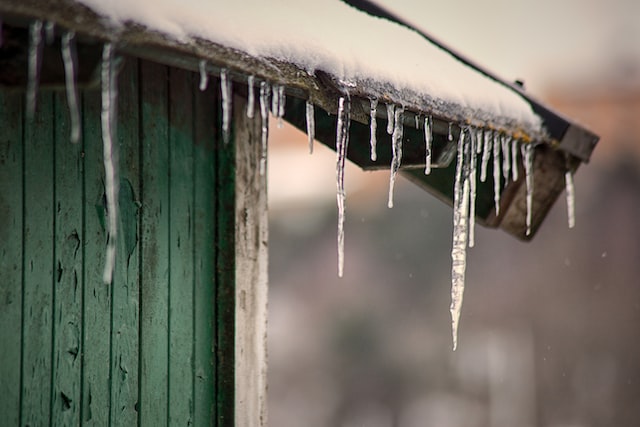1.9.23
What to Do About Roofing Ice Dams


Consumers home loans
We’d love to help you with a mortgage or home equity line of credit.
Learn more.The best way to address ice dams is to correct the heat loss that leads to their formation.
Ice dams—ridges of ice that form on some roofs during the winter—are the result of escaping heat, which melts snow and later turns to ice. You might not notice ice dams until icicles form, but the ice dam itself is just the start of the problem. Damage to shingles, gutters, walls and ceilings may follow, along with the potential growth of mold and mildew. If your home has ice dams, here are some steps to take to minimize damage in the short term and correct the problem for good.
Safety first
Chipping out ice dams with tools like an axe or shovel can be dangerous. The tools can damage your roof, and large chunks of falling ice can tear down gutters, break windows and damage shrubs or trees. Additionally, they can also pose a danger to nearby people and pets. Rather than risking damage and injury, it’s better to call a roofing professional who can remove ice dams safely, using steam that won’t damage your home.
Safely remove excess snow from roof
If you can safely do so, consider removing excess snow from the roof. This will limit the amount of water that can move under the shingles and into the house. A roof rake with a telescoping handle can allow you to keep your feet on the ground while pulling the snow down. Getting snow off the lowest four feet of the roof should be sufficient.
Be sure to keep up with roof snow removal each time it snows to prevent future ice dams from forming.
Heated cables may be an option
Heated cables that attach to the roof’s edge along a zigzag pattern can help alleviate ice dams, but they do have some drawbacks. First, they must be installed before snow falls or during a warm spell when the roof is clear. Second, they don’t address the primary problem of heated air escaping from living spaces. Third, they use electricity, ultimately raising utility bills.
If you opt for heat cables, consider investing in self-regulating cables that turn on in response to moisture and temperature rather than heat cables that continuously run.
Address the bigger problem
The long-term solution to ice dams is to address the heat loss from your roof. Some of the most common places for heat to escape are air ducts, recessed lighting and chimney flashing. Seal leaks with caulk and ensure that the attic is properly insulated.
Also, make sure your roof is properly ventilated. Ventilated eaves and ridge vents work together to keep the roof surface uniformly cold—ensure nothing blocks them.
If ice dams plague your home, consider a DIY home energy assessment. Another option would be to consider contacting a professional who can identify air leaks with infrared cameras and blowers doors.
Ultimately, the only way to eliminate ice dams is to address the underlying air leaks that lead to melted snow, which turns to ice. If you need extensive sealing and insulation updates, consider a Consumers home equity loan to cover upgrades.
When you keep precious heated air inside your home and your roof efficiently ventilated, you can avoid ice dams and the problems they inevitably bring.
Consumers helps more than 2,000 members finance land, first and second homes, and home improvement projects each year. We’d love to help you with a mortgage or home equity line of credit; contact us online or call us at 800-991-2221.
![]()

Consumers home loans
We’d love to help you with a mortgage or home equity line of credit.
Learn more.

